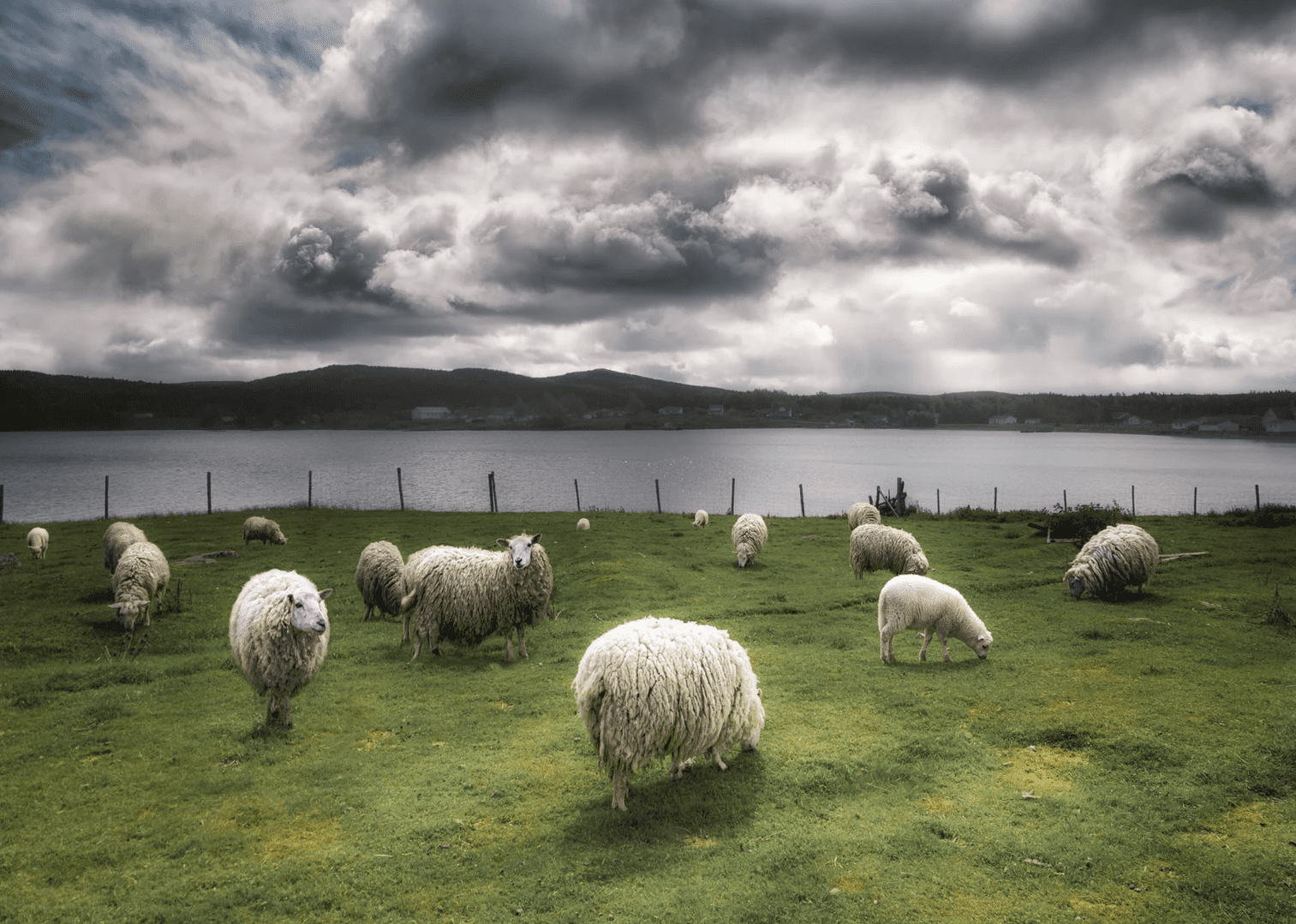Impressions of Newfoundland
The Art of Ting Ting Chen
Impressions of Newfoundland: The Art of Ting Ting Chen
Reviewed by Meagan Eve Cole
Book Published by Breakwater Books 2023
First Impressions:
When my editor delivered this book, I gingerly unwrapped it from its protective Sobey’s bag and caught my first glimpse of Impressions of Newfoundland. For a moment, I felt confused. The cover art is not your typical Newfoundland iconography. It looks surreal, like a painting, and I do not recognize the location. Based on the cover alone, I had no idea what I was in for. Ting Ting Chen serves a different cup of tea than the Newfoundland I’ve steeped in.
Landscapes:
This first section of Impressions of Newfoundland includes a wide array of landscapes, including natural scenery, astrophotography, and architecture, in almost as many styles. Some landscapes were digitally processed to make the highlights look soft and glowing. In many pieces processed this way, the soft highlights are effective, giving the photographs an ethereal, memory-like quality. For example, in “Heaven Pasture,” the sheep’s luminous quality lends itself to the heavenly, idealized look of the pasture and dynamic sky. In “Autumn Colours in Bowring Park,” the whole photo has this dreamy, soft-focussed look, giving it the cinematic look of memory or fantasy.

In some instances, the highlights are blown out. While Chen’s high dynamic range photography skill is impressive in many photos, some photos sacrifice the highlights too much. The result is often that the night sky looks incredible, but the town under the stars looks like it is on fire. It is startling. One example of this is “The Milky Way Above Brigus South.” The astrophotography is stunning, but Brigus looks ablaze. Some photos where Chen decides to sacrifice detail to the shadows or highlights are astounding: “Starry Night at Cook’s Harbour,” “Serenity in St. Vincent’s,” and “Vastness” all exemplify the visual powers contained in stark whites and deep darks.
I was particularly struck by “Serenity in St. Vincent’s.” The swerving line of the beach, with Chen’s friend and muse, Robert Tilley, standing in a curve, is so elegant and skillful in its simplicity. Images like this one excite me, and I feel like I am catching a glimpse of the trajectory of Chen’s development as an artist, capturing those truly one-of-a-kind moments. I believe some photographs in Impressions of Newfoundland could be omitted as many incredibly beautiful images are already found within its pages. The selection could be trimmed to put focused attention on her strongest pieces. Some scenery was repeated across several photographs, while other scenes were not her strongest compositions or exposures – though seeing the photographs documenting where she visited around the island is sweetly nostalgic, it is thrilling to see the pieces showcasing her artistic flair.
Portraits:
Portraiture is my bread and butter when it comes to photography, so to say I am excited about Chen’s work in this section is an understatement! It starts strong with a gorgeous Rembrandt-inspired portrait of Robert Tilley. Each turn of the page reveals a new delight. Chen’s portraits, some of them combining photography with paint, though it’s unclear whether that is digital paint or another medium, are soulful and caring, even playful. At one point, Chen refers to Robert as a “true Newfoundlander,” and my gut reaction was to think, no way, he is anything but a typical Newfoundlander; not just any person his age from Newfoundland would befriend a young student from away and form such a special bond that they would travel the island together and would even pose nude for fine art portraits. But perhaps “true” is the correct word. Robert and the stunning portraits created by Chen are certainly not typical of Newfoundland, but there is truth in them.
Chen’s “Weight of Time” is both devastating and delicate. “Facing Yourself” is dark and psychiatric, highlighting a piece of our island’s underbelly, a composite image with flawless digital editing. There are so many powerful images of Robert exploring themes like mortality and connection to place, as well as lovingly made images documenting Robert’s daily life and family history, so it was interesting to consider Chen’s self-portrait “Vessel for Time.” “Vessel for Time” explores Chen’s personal history, the time that has filled the vessel of her body, and her long hair that hasn’t been cut in 10 years. I’d be interested to know how this meditation on her time passing relates to her impression of Newfoundland – perhaps this was the only self-portrait she’s made while here. Perhaps exploring time’s passing with Robert’s portraits inspired her exploration. I would love to know more.
Like with the selection of landscapes, a couple of images could be omitted from the collection of portraits as they are not as strong as the others. “The Lighthouse and a True Newfoundlander” and “Baby-Blue Eye” don’t flex Chen’s talent and skill with portraiture even though they fit the bill thematically. As a creative, living and breathing Newfoundlandia, I understand the pull (even pressure) to make art with stereotypical imagery of island life. Still, Chen’s painterly portraits are breathtaking, heartbreaking, thought-provoking, and humorous by turns and do not have to lean on crowd-pleasing or familiar visuals to astound. I am excited to see more of Chen’s work; I am excited to see more of the world through her eyes. In Impressions of Newfoundland, we see something more exciting than beautiful images of this place: we see Chen’s perspective as an artist emerging.
Meagan Eve Cole is a photographer and writer from St. John’s, NL. She holds a Bachelor of Arts in Philosophy, English Literature, and Film Studies from Memorial University of Newfoundland and Labrador. Meagan creatively concentrates on works that explore self care and emotional growth
